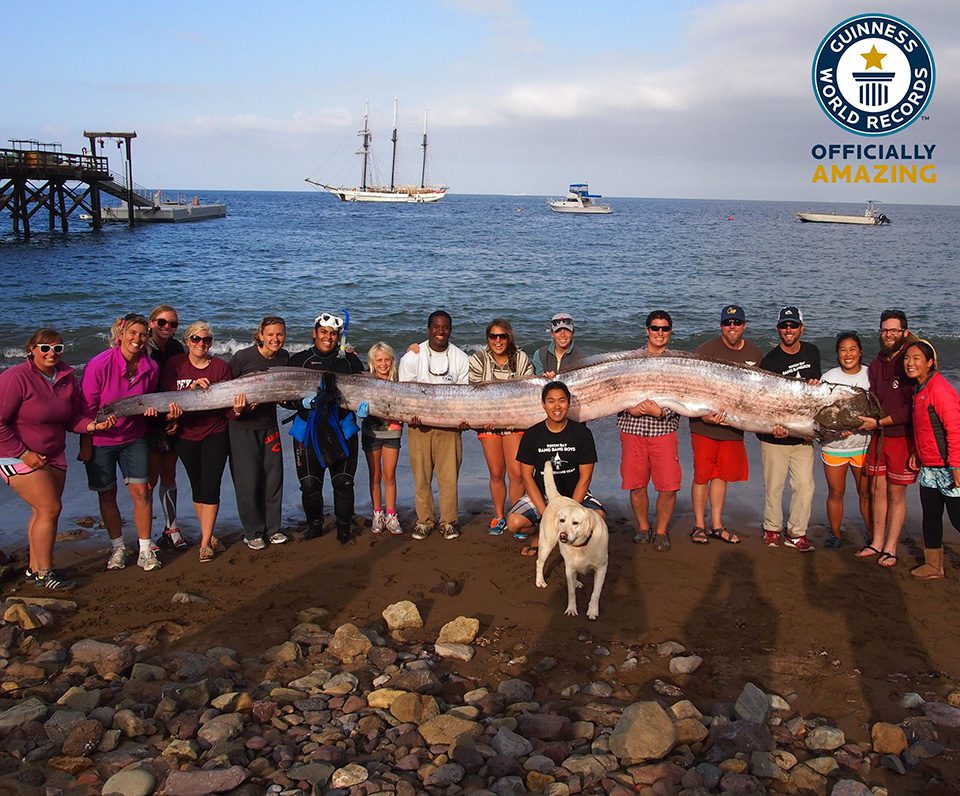
The longest of the bony or “true” fishes (Pisces) is the oarfish (Regalecus glesne), also called the “King of the Herrings”, which has a worldwide distribution. In c.1885, a 7.6-m-long (25-ft) example weighing 272 kg (600 lb) was caught by fishermen off Pemaquid Point in Maine, USA. Another oarfish, seen swimming off Asbury Park, New Jersey, USA, by a team of scientists from the Sandy Hook Marine Laboratory on 18 July 1963, was estimated to measure 15.2 m (50 ft) in length.
The specimen pictured here was found dead in the water off Toyon Bay, California, USA, on 13 Oct 2013 by staff of the Catalina Island Marine Institute; it measured 5.5 m (18 ft) long.
Bony fish (Osteichthyes) are distinct from cartilaginous fish (such as sharks and rays) and account for c.28,000 species across 435 families – the largest class of vertebrate animals. They have bone skeletons, unlike Chondrichthyes, which have cartilage.